Often called the Lhasa Lion Dog, the Chrysanthemum Dog, the Chinese Lion Dog and the Chrysanthemum Faced Dog, the Shih Tzu happens to be an ancient dog breed that traces back all the way to 600A.D. The breed was primarily bred to be a companion dog, and they boast a happy, friendly disposition. Considered a toy breed, these dogs not only make great companion pets, but they are often shown at dog shows as well. They are well-known for a flowing coat that is tied with a bow on the head and the tail that folds up over the dog’s back.
Origin
The Shih Tzu breed traces back to Tibet and China and has been around for many centuries. While it’s not clear how the breed was first developed, it’s thought that the breed came about by crossing small Tibetan breeds and small Chinese breeds, specifically the Pekingese and the Lhasa Apsos. Among china’s Emperors, the Shih Tzu breed was a favorite. In fact, throughout the Tang Dynasty, it’s rumored that a pair of Shih Tzu dogs was given by the king of Vigur to the Chinese court. Later the Ho Chou people would send more of these small dogs. Later, during the 1600s, more of these small dogs, which looked like small lions, were brought to China from Tibet. During the Ming Dynasty, this breed was quite popular among commoners and royalty.
The Dowager Empress Cixi really loved the breed, but once she died, the breed became quite rare again. When China finally became a republic in 1912, Shih Tzus occasionally came to North America, Norway and England. After the Communist takeover in 1949, the breed nearly died out, but a few individuals kept these dogs and became the dogs that are the foundation of the breed we have today.
It wasn’t until the 1900s that the Shih Tzu became a well-known breed in the western world. In 1934, the Peking Kennel Club was first started and it had an international breed show in the same year. Lhasa Lion Dogs and Lhasa Apsos were both entered in the show and judged together, since many people confused the two different breeds. Later, in 1938, the Shih Tzu standard was finally developed.
During the Second World War, American soldiers started to become fond of the Shih Tzu breed. In fact, some soldiers brought these dogs back to the U.S. After the war, more of these dogs were imported into the United States and the upper class of the United States became fond of the breed. It wasn’t until 1969 that the breed was finally recognized in the American Kennel Club’s Stud Book and would become a part of the Toy Group.
Appearance
A round head with a black nose, mustache and beard characterizes the Shih Tzu breed. In most cases, the large, round, wide set eyes are dark colored, but on liver and blue dogs, the eyes may be light. They have a short, square muzzle that should be free of wrinkles. A Shih Tzu also should have the characteristic under bite. The breed’s ears are shaped like a pendant, but they have so much hair that the ears are barely seen. The thickly plumed, tail usually curls over the dog’s back as well.
The coat is long and thick, covering the entire body. The double coat of a Shih Tzu includes a wooly, thick undercoat, as well as a silky, long top coat. When they are nearly a year old, they lose the puppy fluff for the long adult coat. The breed’s coat can come in any color, but dogs that have a forehead blaze and a white tipped tail are very desirable.
Usually both male and females are between 9 and 10.5 inches tall at their shoulder. The weight of a Shih Tzu can vary between 9 and 16 pounds.
Temperament
Although the name, Shih Tzu, actually means “little lion,” these dogs are nothing like their name. They are very easy to train, well behaved and excellent pets for families and single individuals. While they are wonderful watchdogs, if they are not well trained, the barking can become a problem.
A Shih Tzu is considered a lap dog, so these dogs don’t need a lot of activity. A walk and some playing is usually plenty of activity for these small dogs. They can be difficult to train, but when rewards are used, they usually begin learning quite fast. Unfortunately, it can take months to housebreak these dogs, and crate training may be necessary to increase the speed of housebreaking.
Grooming
The Shih Tzu breed requires a lot of grooming. They require daily combing and brushing to eliminate tangles in the coat. A bath is usually needed on a weekly basis. When brushing this breed, it’s essential to make sure the brush reaches down to the skin to prevent mats and tangles properly. Individuals that don’t show their dogs often choose to have the hair clipped short to eliminate the constant grooming. However, dogs that have clipped hair require a trim every two months. Since smaller dogs are more likely to deal with dental problems as they age, brushing a Shi Tzus teeth a couple times each week is important.
Working roles
Since the Shih Tzu is a toy dog that is designed to be a companion dog, they usually do not take on any working roles. However, they are wonderful companions for elderly individuals who are house bound.
Health
In most cases, Shi Tzu dogs live to be between 11 and 15 years old. However, there are a number of different health concerns that are often seen in the breed. Hypothyroidism is very common and occurs due to a malfunction of the thyroid gland. In most cases, middle aged Shi Tzus are most likely to deal with this health problem. Intervertebral disk disease is another common disorder that may cause paresis, coordination problems and back pain. It’s very common among various toy breeds. Due to the shape of the Shih Tzu head and face, they often deal with respiratory problems, such as brachycephalic syndrome.
Some of the other health issues that may affect this breed include:
- Patellar luxation
- Von Willebrand Disease
- Dental problems
- Cleft palate
- Renal dysplasia
- Eye problems

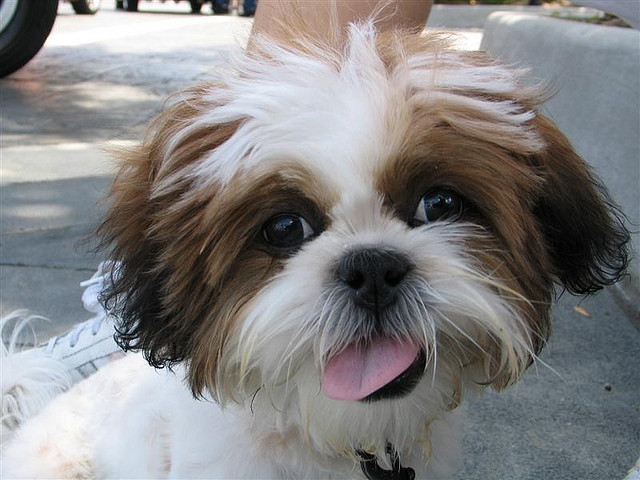
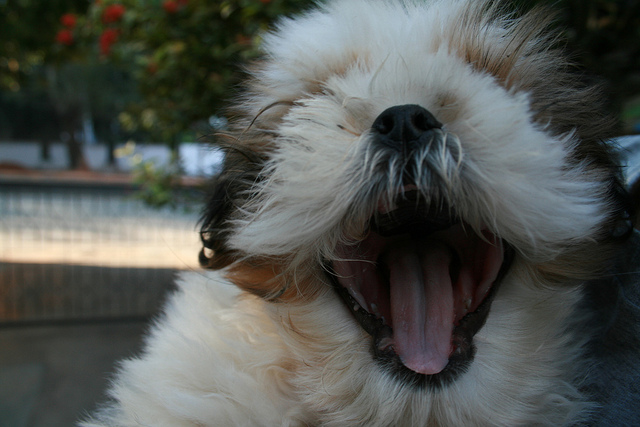
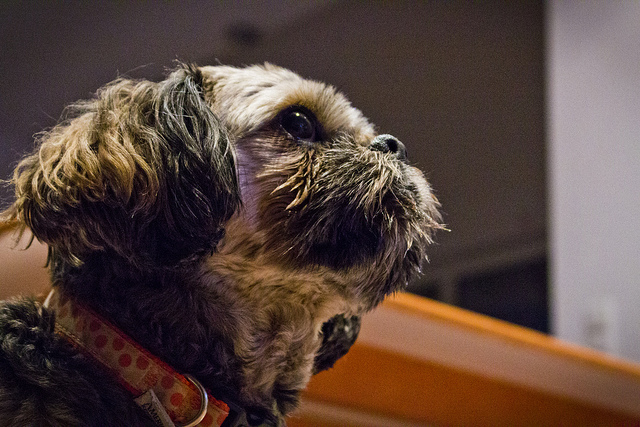
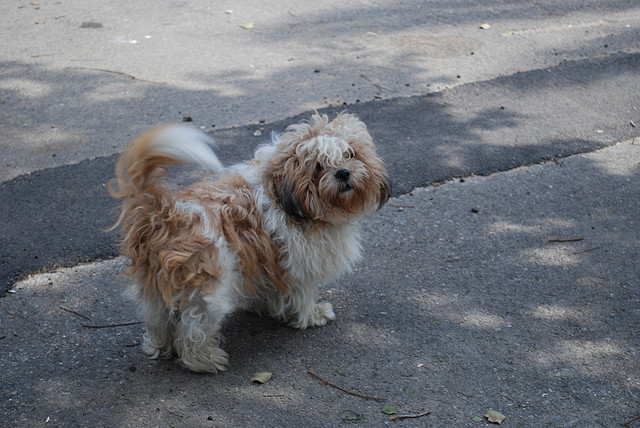
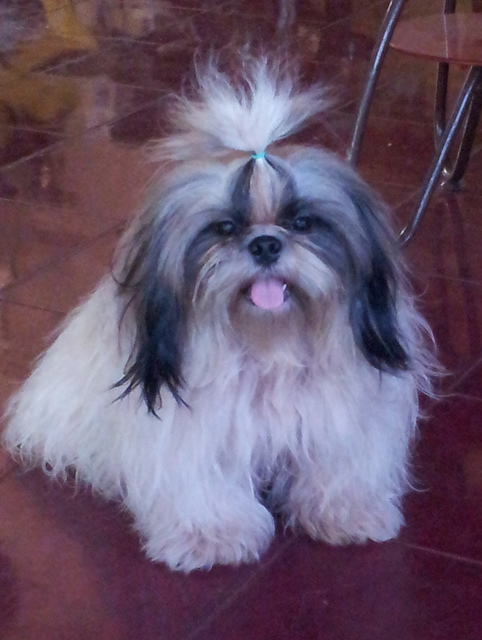
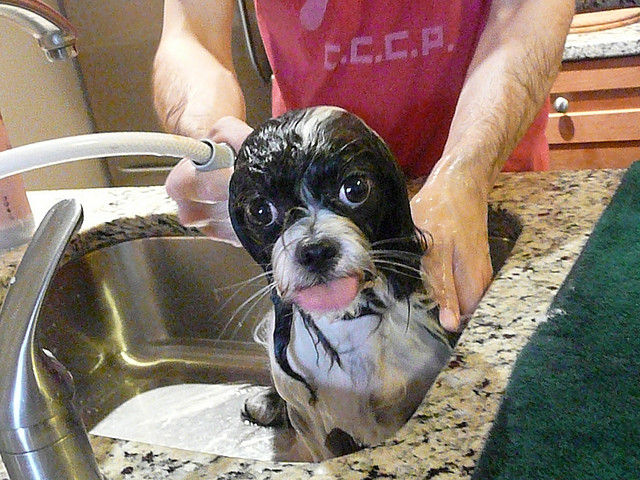
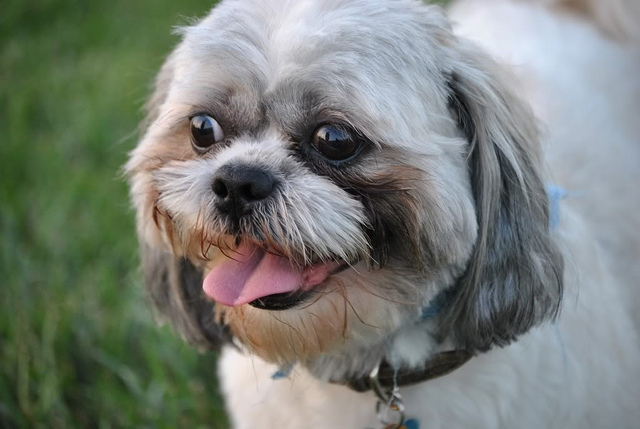
I have a six month old shih tzu and his tail is straight up. Is this normal? Can I do something for him that shih tzu curled?
Thank you